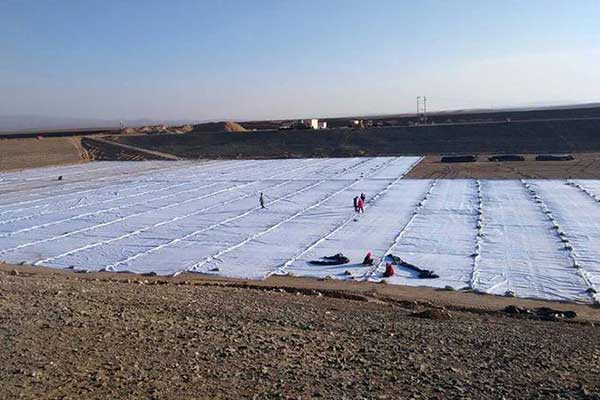What is Nonwoven Geotextile Used For?
Nonwoven geotextile is a versatile and widely used fabric in civil engineering and construction projects. Made from synthetic fibers that are bonded together through mechanical, thermal, or chemical processes, nonwoven geotextile offers high permeability, excellent filtration properties, and durability. But what exactly is nonwoven geotextile used for?
In this article, we’ll explore the key applications of nonwoven geotextile, the benefits it offers, and why it is an essential material for many infrastructure and landscaping projects.

Key Uses of Nonwoven Geotextile
1. Filtration
Nonwoven geotextiles are primarily used for filtration in drainage systems. They allow water to pass through while preventing soil and other fine particles from entering drainage pipes or aggregates. This is crucial in maintaining the performance of drainage systems in roads, retaining walls, and French drains.
Common Applications:
- Subsurface drainage systems
- French drains
- Retaining walls
- Underdrains in roads and highways
2. Separation
Another important use is separation. Nonwoven geotextiles act as a barrier between different soil layers, preventing them from mixing. This helps maintain the structural integrity of pavements, railways, and embankments.
Common Applications:
- Road construction
- Railway track beds
- Parking lots
- Airport runways
3. Erosion Control
Nonwoven geotextile plays a critical role in erosion control by stabilizing the soil and reducing water runoff. It is often used in areas vulnerable to water and wind erosion, such as riverbanks and slopes.
Common Applications:
- Coastal protection
- River and stream banks
- Steep slopes
- Shoreline stabilization
4. Protection
In landfill and waterproofing applications, nonwoven geotextile is used for protection. It cushions geomembranes and prevents punctures from sharp objects or irregular surfaces.
Common Applications:
- Landfills
- Tunnel linings
- Reservoirs
- Waste containment systems
5. Reinforcement
Though woven geotextiles are more common for high-strength reinforcement, nonwoven types are sometimes used for light-duty soil reinforcement, especially in landscaping and minor infrastructure works.
Common Applications:
- Walkways and driveways
- Lightly loaded roadways
- Landscaping features
Benefits of Nonwoven Geotextile
- High permeability – Promotes excellent drainage
- Versatile – Suitable for many civil, environmental, and landscaping uses
- Durable – Withstands tough environmental and mechanical conditions
- Cost-effective – Reduces maintenance costs and improves project lifespan
- Easy to install – Flexible and easy to cut to size on site
Conclusion
Nonwoven geotextile is a critical component in modern construction and environmental engineering. Whether it’s used for drainage, filtration, erosion control, or soil stabilization, this geosynthetic material enhances performance, extends service life, and lowers maintenance needs.
